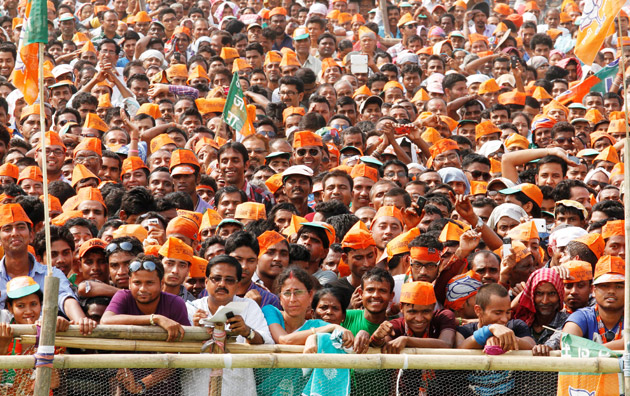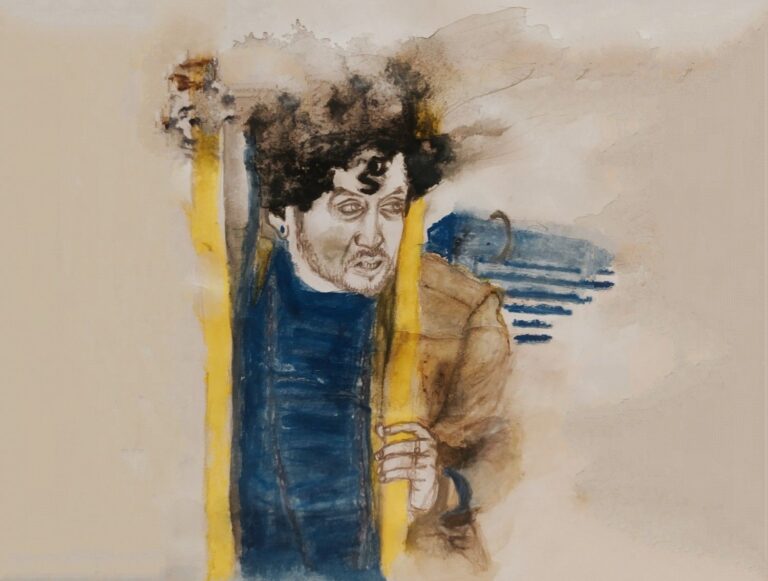Caste-Identity Politics in India

Anondeeta Chakraborty is a fresh graduate in political science from St. Xavier's College (Autonomous) Kolkata. She is presently working as a research Co-ordinator with Global Counter Terrorism Council. Her interest lies mainly in the arena of international politics and security issues.

Indian politics since independence has been tangled up with four main key identities of language, religion, caste and tribe. While the language in the early days of Indian politics led to the creation of the states, in later years the identity of caste began to play an incredibly prominent role in India’s vote bank politics.
The Indian National Congress, which bore the flag of Indian independence eyed for a “salad bowl” approach of composite nationalism; meaning a harmonious existence of all regional identities. But sub-national aspirations kept on growing as the democratic process evolved. One of such big challenges that threatened the unfolding of a composite nationalist culture was caste identities. In the initial days of this democracy, caste identities never developed so much politically. This politicization began mostly in the southern part of India, where the dominance of Brahmins and the conventional “higher castes”, were ended by the 1960s and the 1970s. By the decade of 1980s and 1990s, the political version of the caste narrative reached northern India, from where it reached its zenith of importance in Indian politics.
The horribly complex character of the Hindu society has given rise to a plethora of castes and sub-castes with diverse social backgrounds, making it more and more difficult to streamline such a myriad number of caste identities under specific heads. Even the constitution has been very vague about identifying the oppressed castes in India, only officially designating the Schedule Castes and leaving the rest to Government’s discretion. The affirmative policy of reservation failed to bring the scheduled castes any sort of social recognition. The Independent Labor Party formed by Ambedkar in 1936, which later transformed into All India Scheduled Caste Federation, for a time being catered to the aspirations of the scheduled caste in India, but was not very successful.
Although the Indian National Congress, portrayed itself as an “all Inclusive” party, catering to the interest of every other subnational groups, in reality, it has been very disproportionately filled with people from the “upper” castes. In the decades of the “one-party rule” by the Congress in India, parties formed on the basis of subnational identities like caste could not carve out a niche for itself. It was mostly after the debacle of the Congress rule in the 2nd half of the decade of the 1970s that these parties slowly started cropping up in the Indian political scenario. With the arrival of the Janta Party, headed by Morarji Desai, a new chapter was unleashed featuring caste as one of the biggest players in Indian politics.
Morarji Desai set up the Socially Backward Classes Commission or more commonly known as the Mandal Commission in 1979. It was formed mainly with the motive of extending benefits to “backward classes” other than the scheduled caste. While it was not straight away implemented, it paved the way for the strengthening of caste-based parties in India. In 1984 the Bahujan Samaj Party was formed solely with the aim of representing the “Bahujans”, referring to Scheduled Castes, Scheduled Tribes, and Other Backward Classes, along with religious minorities by Kashiram. Within a very short period of time, the party became a very important player in the regional politics of Uttar Pradesh and providing the country with the very first Dalit female Chief Minister Mayawati, in 1995. Similarly, the Samajwadi Party formed in 1992, has a large chunk of its ideology formed on the basis of caste identities, with an incredibly strong backward caste voter base. (OBC). The increasingly important role that these parties played during the era of national coalition politics, up until 2014, justifies the prominent role the caste-based parties played in the Indian political scenario.
The Backward Classes are such a potential vote bank community that almost all parties vie for their support. For example, the Congress (I) in Maharashtra has long depended on Backward Classes’ backing for its political success. Established political parties like DMK or AIADMK in South India has tried to woo the Dalit voters, side by side with their own regional appeals. Big national parties like the BJP or INC, if not on a national level, have been bound to pursue after Dalit vote banks in making their regional gains. As N.D. Palmer has observed “Caste concerns are given nice weight within the choice of candidates and within the appeals to voters throughout election campaigns.” (Pingle and Varshney #)
The growth of regionalism in Indian politics after the demise of the absolute Congress rule is yet another factor that has fueled the growth of caste-based politics in India. Regional political parties, whenever they get the opportunity to rule their respective states, inherit a tendency to use political power for furthering the interests of the caste groups which assist or can support their regimes. Recruitment to political offices is chiefly done with due recognition to the caste of the persons. The caste factor hugely impacts the process of ministry making and the allotments of portfolios. Each big caste group always tries to procure ministerial berths for such elected representatives who belong to their own respective caste. Caste issues have only been very influential in the policies and choices some state governments have made. The party in power continuously tries to use its decision-making advantage, to win the favour of major caste teams. Congress especially at the state level had continuously tried to nurture caste identities, to regulate its vote bank. Caste also plays a part in the recruitment of political leaders. . The leadership of Sh. Kanshi Ram and Ms Mayawati had been entirely based on their caste identity-centric appeal. So was the leadership of Karpoori Thakur in Bihar, Ch. Charan Singh in UP and Dev Raj Urs in Karanataka. The political clout of Sh. Laloo Prasad Yadav in Bihar is yet another example of caste-based Leadership. (Kothari #)
The founding fathers of the Constitution of India always desired for a republic free from these narrow subnational identities especially caste. The way it has plagued Indian society through the centuries has remained unparalleled. Naturally, it has been a long term goal of our founding fathers to free the country of such vices. Affirmative action like reservations was introduced to keep people at par with each other. But somehow everything backfired, making the identity of caste extremely politicized. Caste today acts as a factious as well as a cohesive force in Indian politics. It provides a basis for the emergence of many subnational interest groups within the Indian system that competes with each different cluster for political clout, social prestige and economic stability. No doubt, that it has resulted in an unhealthy struggle for power, based solely on identitarian factors. However, caste-based parties also open many avenues for the marginalized. It provides them with a voice, with a strong platform to express their aspirations and limitations. And then those can be given a concrete form through political institutions, which otherwise would have been marred. At the end of the day, it all depends on the political parties whether they would use caste simply to further their vote bank interests or to actually play a part in the upliftment of the marginalized.
References
- Kothari, Rajni, editor. Caste In Indian Politics. Orient Longman Private Limited, 1970.
2. Pingle, Vibha, and Ashutosh Varshney. “India’s Identity Politics: Then and Now.” Managing Globalization, World Scientific, 2006, pp. 353- 385.







